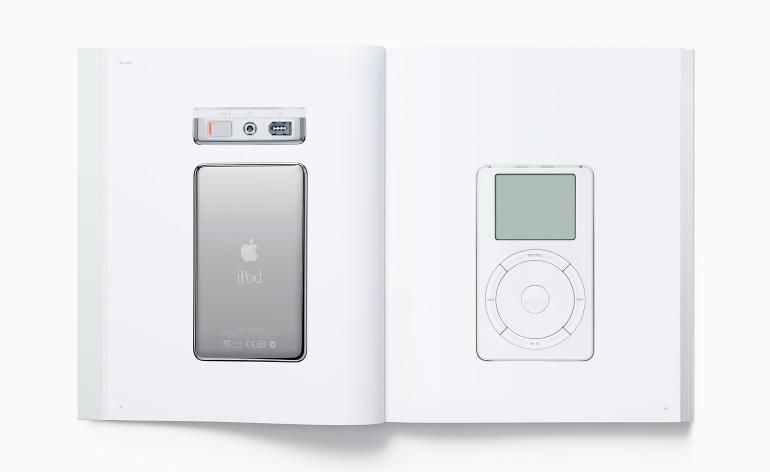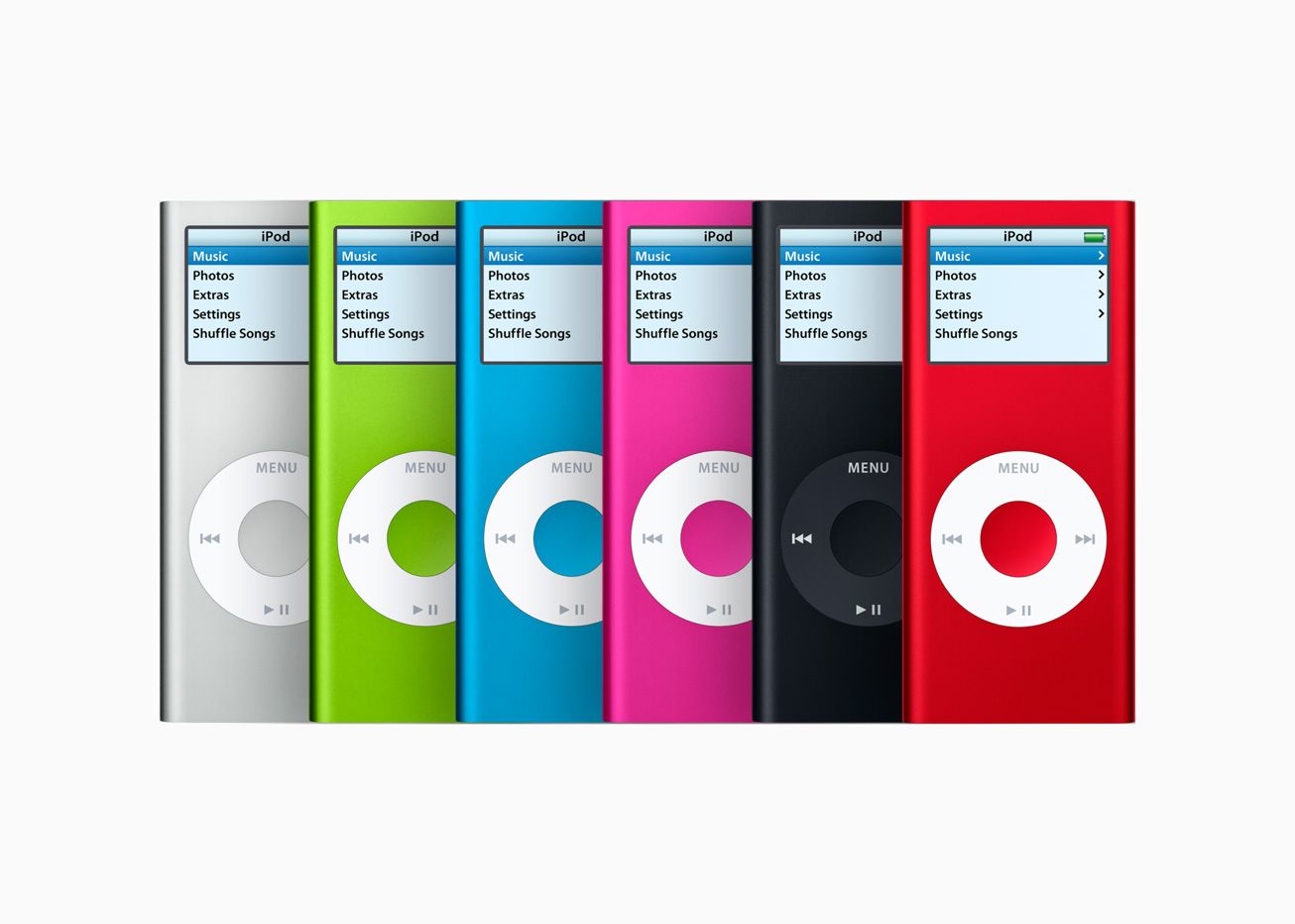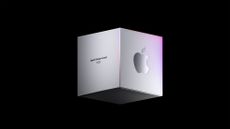Jony Ive and Apple: three decades that changed design
As Jony Ive’s consulting contract with Apple ends, we look back on one of design and technology’s most fruitful partnerships

As the contractual connection between Sir Jony Ive and Apple Inc is finally severed, it brings to an end three decades of collaboration. Ive and Apple were one of the great industrial design partnerships of the modern age, the driving force behind what became the world’s first trillion-dollar company (and first $2 trillion and $3 trillion company as well).
Following Ive’s arrival at Apple in 1992, his promotion to lead the design teams in 1996 was serendipitously timed. Not only did it coincide with the founding of a pioneering design magazine called Wallpaper*, but it was just before the start of Steve Jobs’ second and more significant tenure at the company he co-founded in 1976 and left in 1985. Ive joined the San Francisco-based firm straight from Tangerine, a London-based design consultancy. Tangerine began consulting for Apple back in the early 1990s, working on ‘Project Juggernaut’, the initial design development for what would eventually become the PowerBook. Working alongside Martin Darbyshire and Clive Grinyer, the 20-something Ive came up with a tablet computer design quite unlike anything on the market.
Apple had its lures out. Some have since speculated that Project Juggernaut was little more than a fishing exercise to reel in the British designer, initiated by Apple’s then director of industrial design Robert Brunner (who had met Ive when the latter was a student). Urged on by his colleagues at Tangerine, Ive eventually jumped ship and would go on to succeed Brunner as head of the company’s internal design department.

Interview from Wallpaper’s March/April 1997 issue, featuring the then 29-year-old Jony Ive
Wallpaper* had its first audience with the newly promoted Ive back in issue 3, when Andrea Coddington and photographer Matt Hranek travelled to Cupertino to meet the 29-year-old, black clad, goatee-sporting Ive and marvelled over influences that included rave flyers, underground music and classic Jaguars. The occasion was the launch of the eMate, a short-lived clamshell laptop with a touch screen and the Newton operating system. Within a few months of our story, CEO Gilbert Amelio was out, and Jobs was back in charge.
Ive and Jobs rapidly developed a close working relationship, with both prizing non-conformity and a desire to do things differently, indulged and enhanced by the ability to transform technology into totemic objects of desire. The cult of Apple was born. By October 2006, when Wallpaper* featured Ive in our ‘40 under 40’ feature, we were already hailing him as ‘the most important British industrial designer of all time’ – ‘… imagine no iPods, no iMacs, no iBooks?’ we lamented.

The first iPhone, debuted in 2007.
Then came the iPhone. In December 2010, Sophie Lovell interviewed Ive, alongside a moody portrait by Jason Schmidt and a teetering tower of highly desirable Apple goods, including the candy-coloured iPod Nano and the relatively newly launched iPad, shot by Matthew Donaldson. Ive and Jobs – by this point gravely ill and conspicuously absent from the profile – were creating whole categories and reshaping great swathes of the cultural landscape.
Ive rarely spoke of his influences, but one name shone through. The work of the legendary German industrial designer Dieter Rams is often cited as a precursor to many of Ive’s most rigorous and minimal design statements. Indeed, when Lovell came to write the acclaimed monograph on the Braun designer’s work, Dieter Rams: As Little Design as Possible, it was Ive who provided the introduction.

Apple Watch Hermès, series 4, 2018
Perhaps Jobs’ death in 2011 was a watershed moment for Ive’s time at Apple. Certainly, he was starting to allow himself to look beyond the standard confines of consumer tech. In 2015, the newly minted partnership of Ive (by now Sir Jonathan Ive) and Marc Newson took the top spot in our 200th issue Power List.
Ive saw a kindred spirit in the Australian designer and ostensibly brought him into the Apple fold to consult on the newly launched Apple Watch. We also speculated that the car-crazy Newson (a passion Ive shares) was working on the much-rumoured Apple Car. Seven years on, and Project Titan, as the car programme is known, is still shrouded in rumour.

Jony Ive at Apple’s Foster + Partners-designed HQ, Apple Park, in Cupertino, for Wallpaper’s December 2017 issue
A year later, in October 2016, we crowned Sir Jonathan as one of our global game-changers, returning to California once again the following December to explore the endless curves of one of his largest and most significant projects, Apple’s new 2.8 million square foot HQ in Cupertino. Designed by Foster + Partners, with Ive closely involved in almost every aspect of the form, layout, and interior, Apple Park opened in April 2017 and marks the zenith of the designer’s time at the company.

The staircase at the Steve Jobs Theater, Apple HQ, for Wallpaper’s December 2017 issue
For Wallpaper*, it also marked the arrival of one of our most coveted limited-edition covers, which saw our logo rendered in the colours of the original Apple spectrum and left blank the space usually intended for cover artwork.

Wallpaper* subscribers received Jony Ive’s limited-edition December 2017 cover
Like all things Apple, the circular HQ was conceived and created in great secrecy, before being unveiled to the world as a fully formed, fully realised thing. It’s a strategy that goes back to the early days of Jobs, as he sought to dispel Apple’s reputation for quirky experimentation and devices that tended to suffer public growing pains. To counter this, design and engineering were fervently locked down, enhancing the sense of near-miraculous technological leaps with the high-profile arrival of each new device. ‘The way that we work is quietly,’ Ive told Wallpaper’s Nick Compton in 2017. ‘We are conspicuously different in that, and it is an important part of who we are.’ He was talking about the design team, a closely-knit group of professionals who have many years of shared experience and an intuitive sense of collaboration.

iMacs featured in the 2016 book Designed by Apple in California, by Jony Ive with ‘We used the same composition as the launch shot in the 1990s,’ Ive told us at the time.
In fact, the company was so forward-thinking that when it came to compile the hefty photographic monograph Designed by Apple in California, Ive realised that the design studio simply didn’t own many of its creations. ‘Many of the products that you see, we actually had to go out and purchase,’ he told Wallpaper’s then-editor-in-chief Tony Chambers in 2016. ‘It’s a rather shameful admission, but it’s just not an area that we really invested much time or energy in, so we started to build an archive of the physical products.’
In June 2019, Ive announced he was stepping down from the chief designer role at Apple and setting up a new venture, LoveFrom, which also includes his longtime collaborator Newson. LoveFrom began with Apple as its primary client (with a non-compete clause to prevent competitors from gaining access to Ive’s skills), and rumour has it that the two men remained close to Project Titan. Perhaps Ive’s final severing of ties implies another shift in focus for the car concept, but with that contract officially ended, LoveFrom is now free to work for whoever it chooses.

The inaugural iPod model in 2001 had a combined exterior; a single sheet of formed and polished 304 stainless steel with laser-etched graphics for the back, and a double protection of PC/ABS and clear polycarbonate for the face. Featured in Designed by Apple in California, by Jony Ive
The inaugural iPod model in 2001 had a combined exterior; a single sheet of formed and polished 304 stainless steel with laser-etched graphics for the back, and a double protection of PC/ABS and clear polycarbonate for the face. Featured in Designed by Apple in California, by Jony Ive
Tech design operates on a skewed timetable, with studios typically working on products that are two or three years from market. Ive’s stepping back in 2019 probably means that his hand will no longer be on any of Apple’s next-generation products. In any case, the signs are that Apple design is taking a more democratic approach to design authorship, mindful of the huge marketing power and name recognition that Ive brought to the firm, but also the perennial problems of attributing massively complex designs to the creative processes of a single person.

The first iPad, launched in 2010.
When we caught up with Design Team leaders Evans Hankey and Alan Dye at Apple Park in 2021, the spirit of Ive was still very much present in the studio. Whatever Apple does next, the values and ethos that he brought to the company will endure, and his name will be indelibly associated with some of the most influential technology ever made.
Old habits die hard and LoveFrom’s client and project list is kept low-key and under wraps. The company is certainly working with Ferrari and Airbnb – on what we know not – and created the elaborate Terra Carta Seal, an award bestowed on companies with a pioneering approach to sustainable business.

Jony Ive headlines the August 2022 issue of Wallpaper* with Prince Charles, and speaks about the Terra Carta Design Lab and the future of design.
This month, Wallpaper* provided another exclusive, bringing Sir Jony together with HRH Prince Charles for the magazine’s August 2022 issue, to discuss the Terra Carta Design Lab, an educational offshoot from the awards that recognises students making an important contribution to this vital field. Ive is coming to the end of a stint as chancellor of London’s Royal College of Art, and it’s clear he considers engagement with making and manufacturing is just as important as the process of design itself.
With his portfolio, Sir Jony Ive will endure intense scrutiny on whatever he turns his hand to next. Like every tech behemoth, Apple balances its environmental and social responsibilities with a deep respect for the bottom line. Under Ive’s design leadership, the company made great strides in areas like minimising packaging and increasing product recyclability. Given the scale of the challenges facing the world today, perhaps we should be grateful that this keen and caring mind is now free to turn his mind to different aspects of the world of product design.

AirPods, launched in 2016.

iPod nano (2nd generation), 2006.
Wallpaper* Newsletter
Receive our daily digest of inspiration, escapism and design stories from around the world direct to your inbox
Jonathan Bell has written for Wallpaper* magazine since 1999, covering everything from architecture and transport design to books, tech and graphic design. He is now the magazine’s Transport and Technology Editor. Jonathan has written and edited 15 books, including Concept Car Design, 21st Century House, and The New Modern House. He is also the host of Wallpaper’s first podcast.
-
 Gallery Fumi makes LA debut with works from Max Lamb, Jeremy Anderson and more
Gallery Fumi makes LA debut with works from Max Lamb, Jeremy Anderson and moreFumi LA is the London design gallery’s takeover of Sized Studio, marking its first major US show (until 9 March 2024)
By Tianna Williams Published
-
 Brazil’s Casa Subtração contrasts dramatic concrete brutalism with openness
Brazil’s Casa Subtração contrasts dramatic concrete brutalism with opennessCasa Subtração by FGMF is defined by brutalist concrete and sharp angles that contrast with the green Brazilian landscape
By Ellie Stathaki Published
-
 Level up at the The Residence, Claridge’s new André Fu-designed penthouse
Level up at the The Residence, Claridge’s new André Fu-designed penthouseClaridge’s The Residence is a new purpose-built two-tier glasshouse overlooking London’s skyline
By Lauren Ho Published
-
 Apple Vision Pro: exclusive interview with the Apple Design Team
Apple Vision Pro: exclusive interview with the Apple Design TeamApple Vision Pro – available today in the US – is a wearable spatial computer that blends the digital with the physical, heralding a whole new platform for experiencing technology
By Pei-Ru Keh Published
-
 What’s new from Apple: iPhone 15 and Apple Watch Ultra 2 make their debut
What’s new from Apple: iPhone 15 and Apple Watch Ultra 2 make their debutApple cuts the cord with its isolationist past by joining the USB-C party. Other enhancements and upgrades ensure the new iPhones remain the photographer’s choice
By Jonathan Bell Published
-
 Linn Sondek LP12-50 turntable: LoveFrom gives a minimalist classic new spin
Linn Sondek LP12-50 turntable: LoveFrom gives a minimalist classic new spinLinn teams up with Jony Ive’s LoveFrom to craft the ultimate in vinyl revival, a limited edition of its classic Sondek LP12 turntable, marking its half-century
By Jonathan Bell Published
-
 Apple Design Awards 2023 celebrate the work of iOS app developers
Apple Design Awards 2023 celebrate the work of iOS app developersApple Design Awards 2023 exclusive: as Apple rewards developers for the quality of their App Store wares, we showcase three standout apps and reveal all 12 winners
By Pei-Ru Keh Published
-
 Will Apple Vision Pro usher in a new world of spatial computing?
Will Apple Vision Pro usher in a new world of spatial computing?All eyes are on Apple’s first foray into augmented reality. Apple Vision Pro promises to bring us a new world of work and play
By Jonathan Bell Published
-
 ‘Make Something Wonderful’ is the first publication from the Steve Jobs Archive
‘Make Something Wonderful’ is the first publication from the Steve Jobs ArchiveThe ultimate exploration of a singular mind, ‘Make Something Wonderful’ is Steve Jobs in his own words
By Sarah Douglas Published
-
 Horse around: playful equestrian codes rule in Apple and Hermès’ new collaboration
Horse around: playful equestrian codes rule in Apple and Hermès’ new collaborationThe Apple Watch Hermès Series 8 imbues Hermès’ heritage with a playful design
By Hannah Silver Last updated
-
 Behind the glassy façade of Apple’s newest London store lies an AR art wonderland
Behind the glassy façade of Apple’s newest London store lies an AR art wonderlandArtists Tin Nguyen and Ed Cutting have created ‘United Visions’, an augmented reality world for Apple’s Brompton Road store that brings the chaotic inner world of poet William Blake to life
By Nick Compton Last updated










